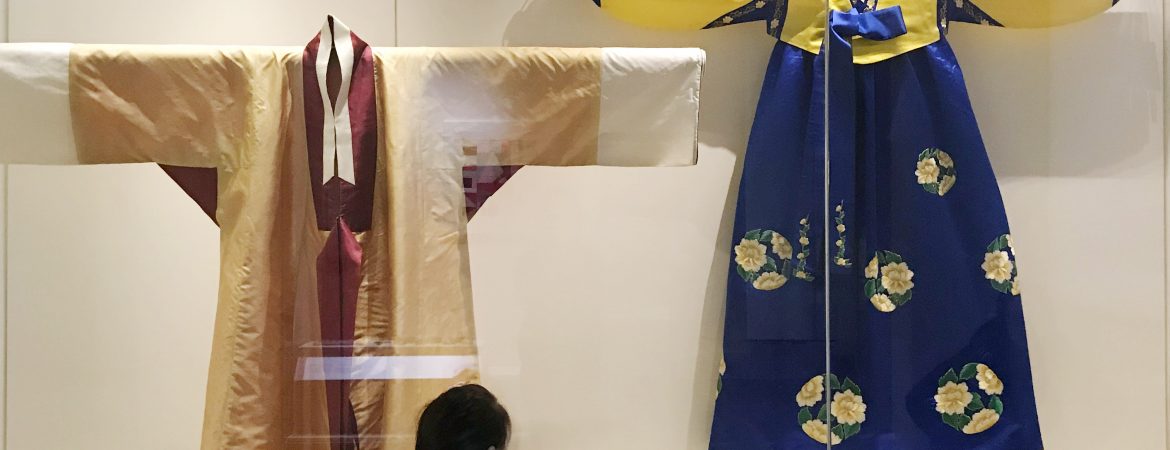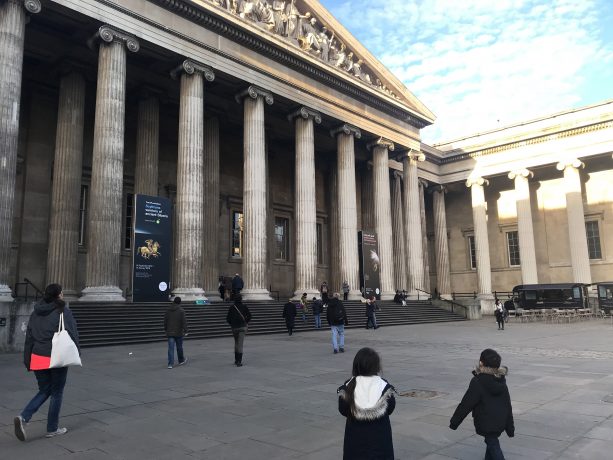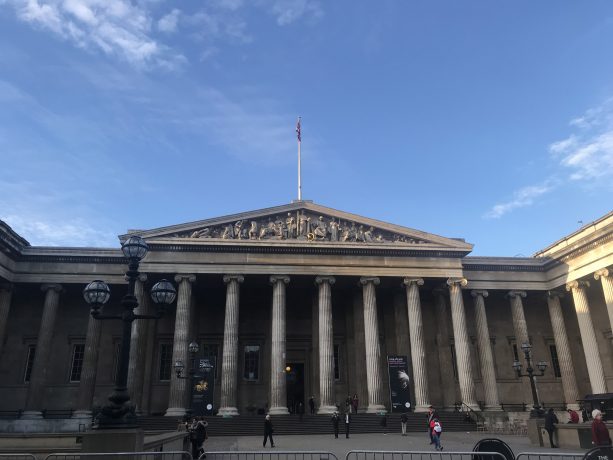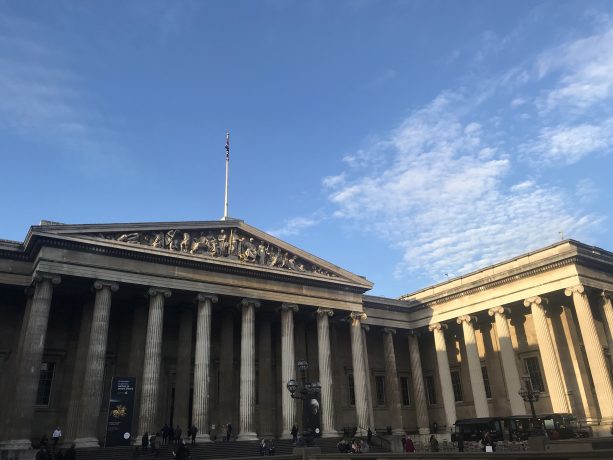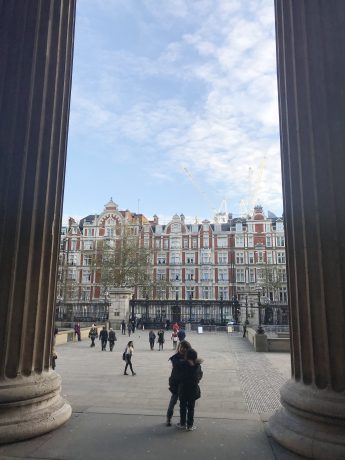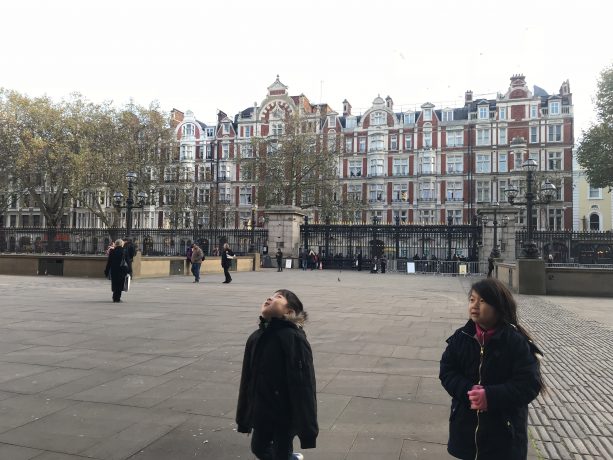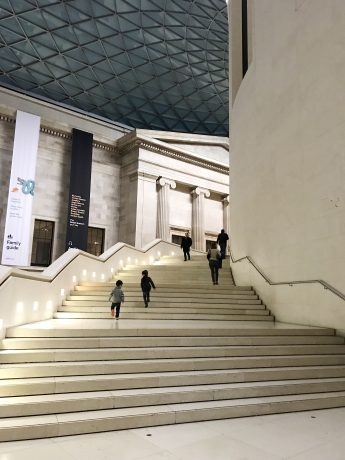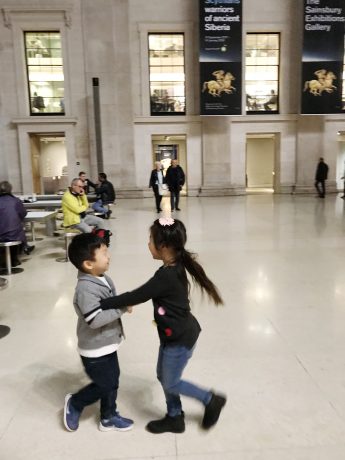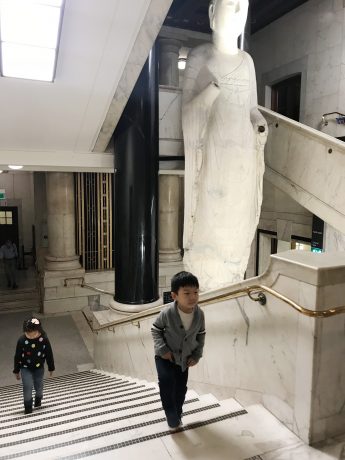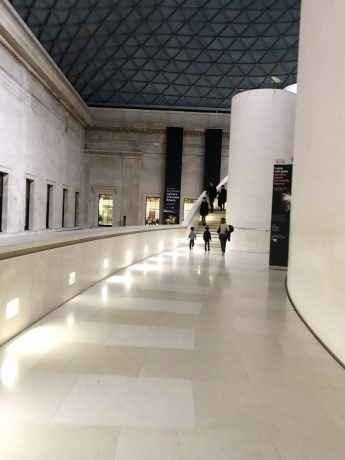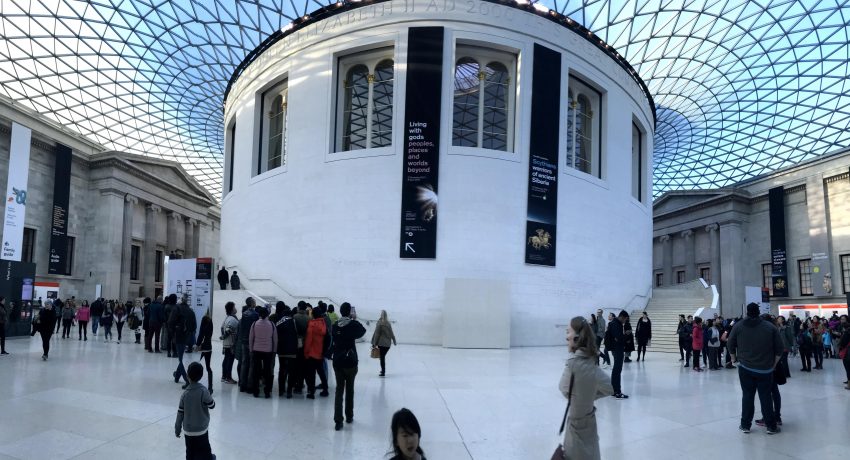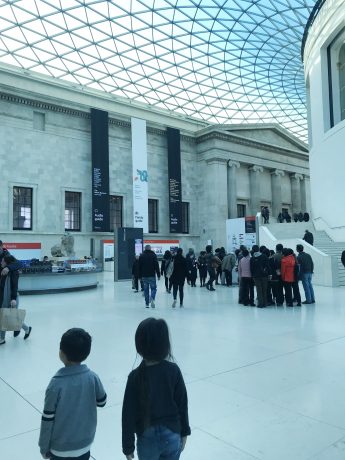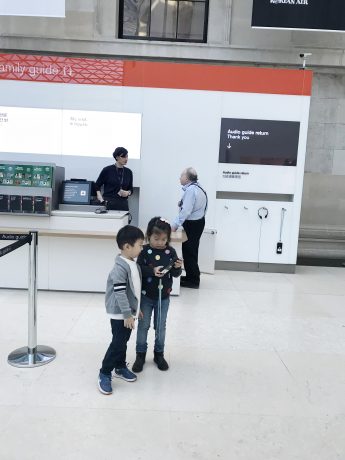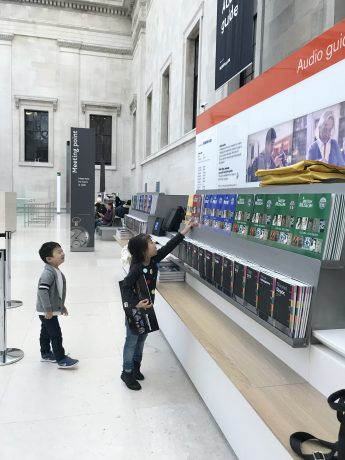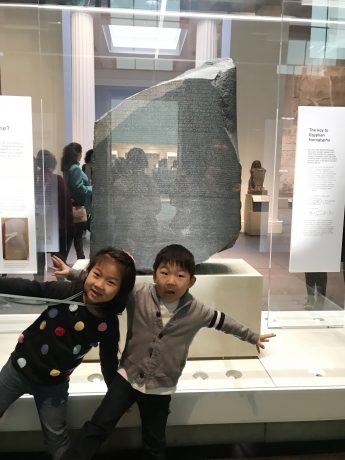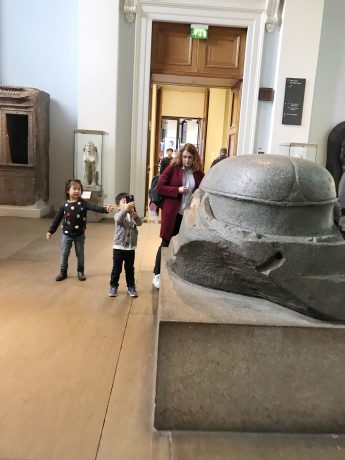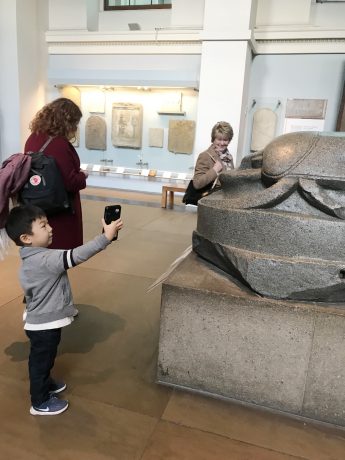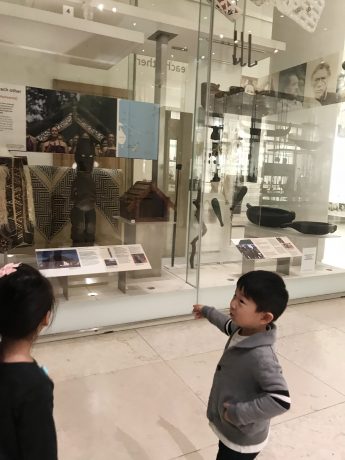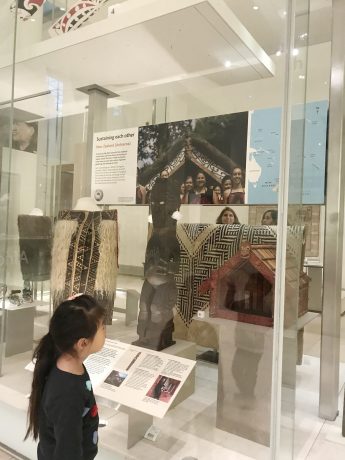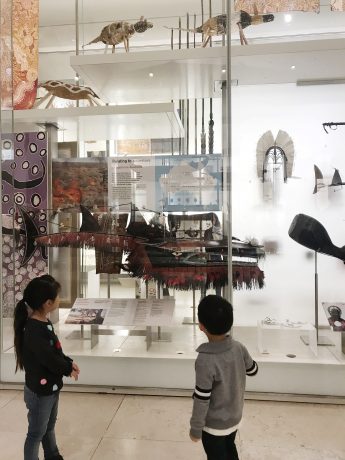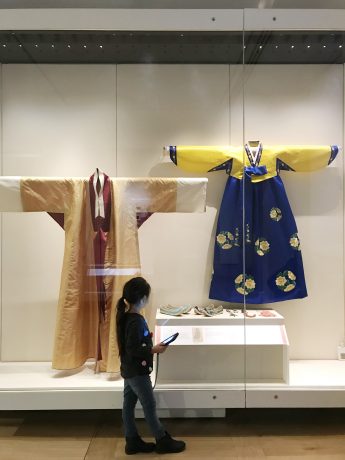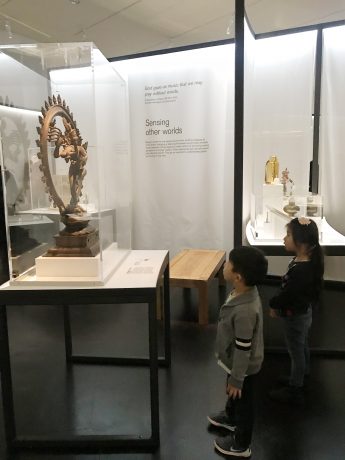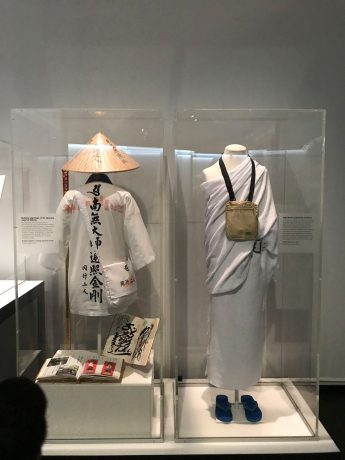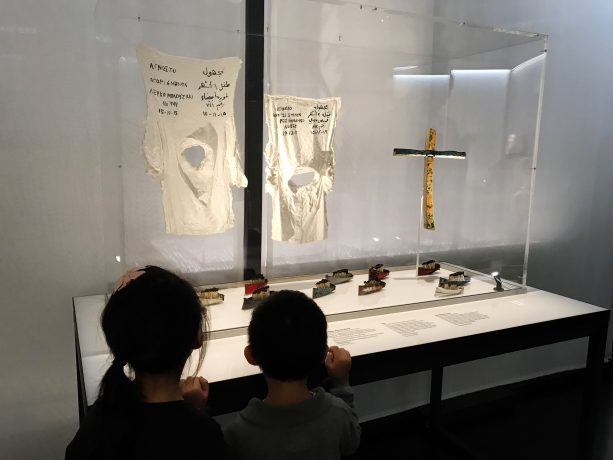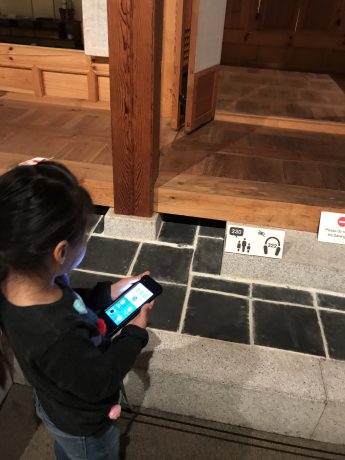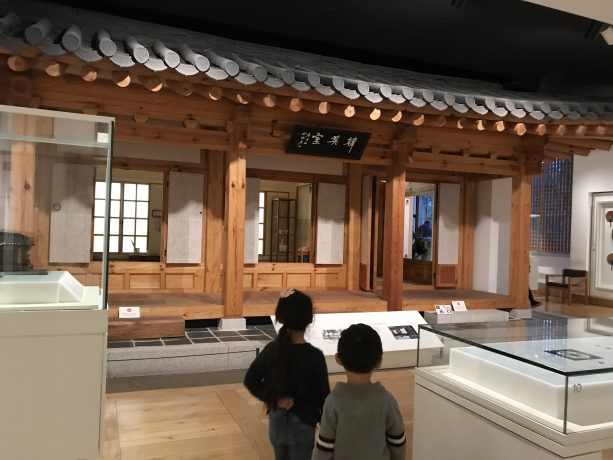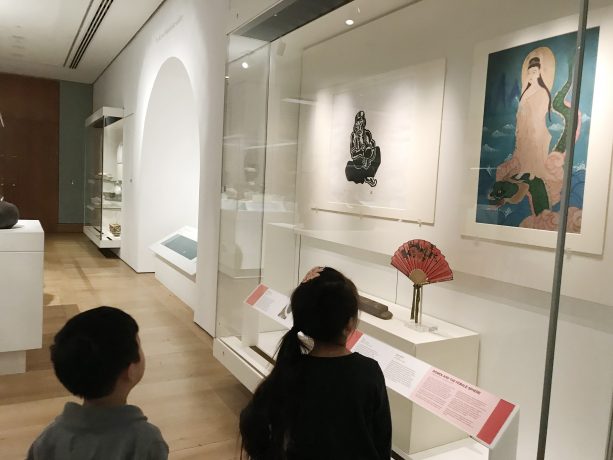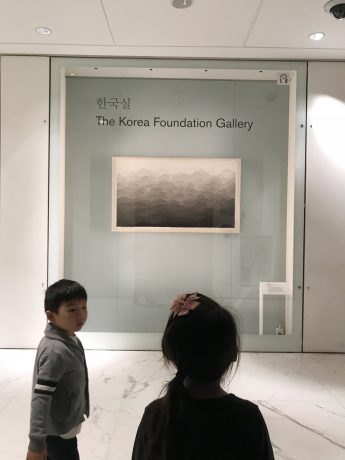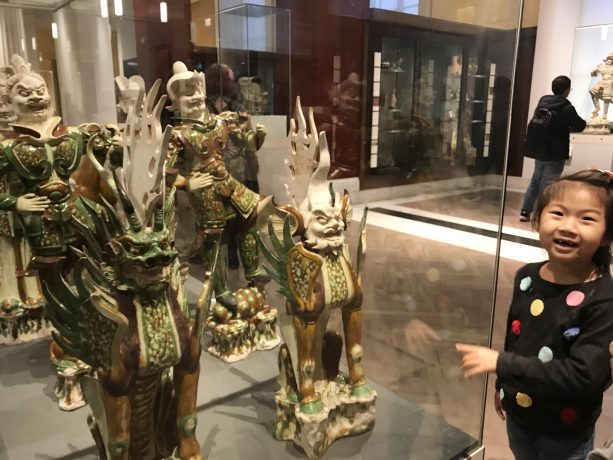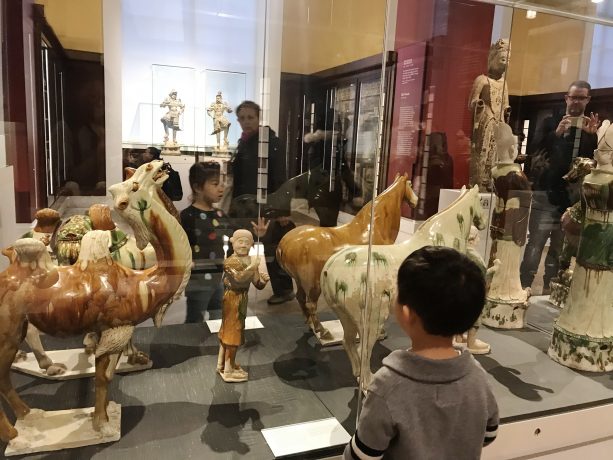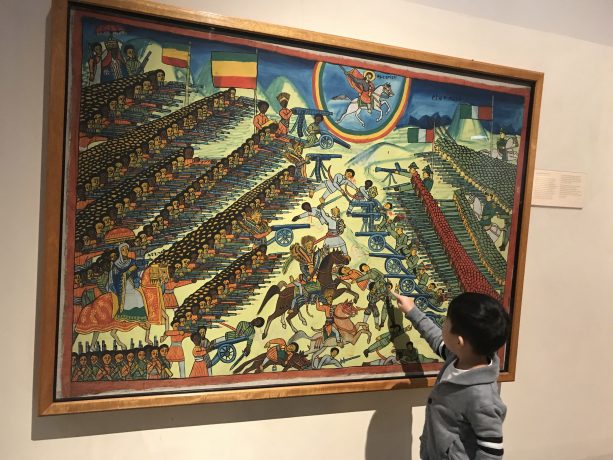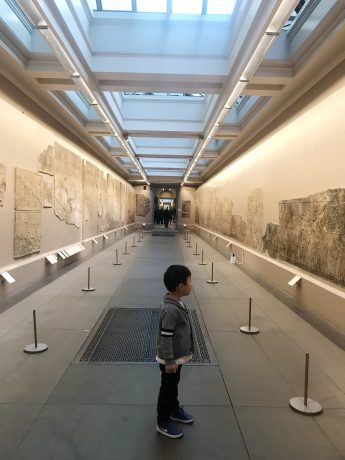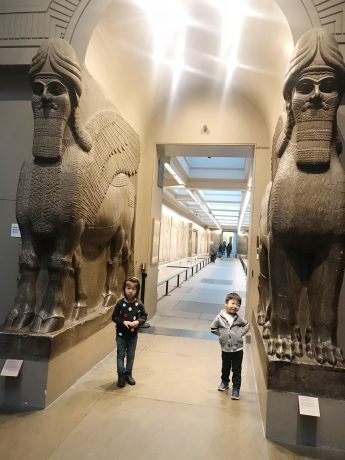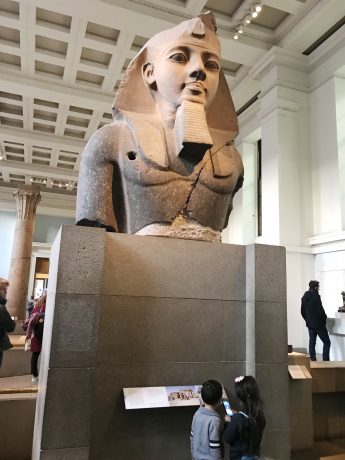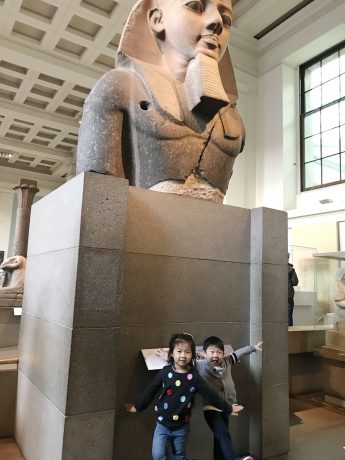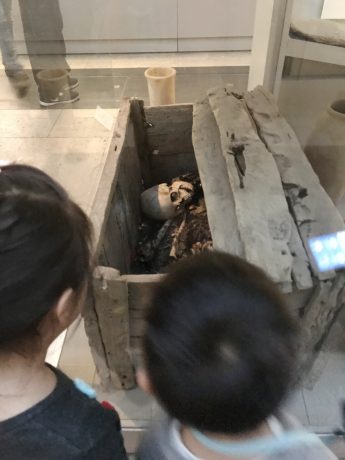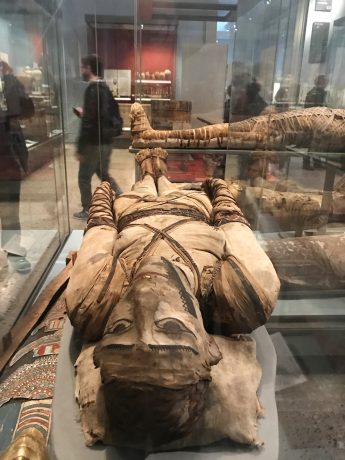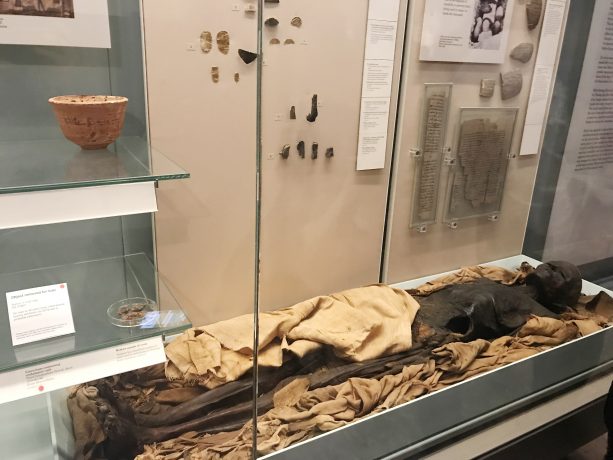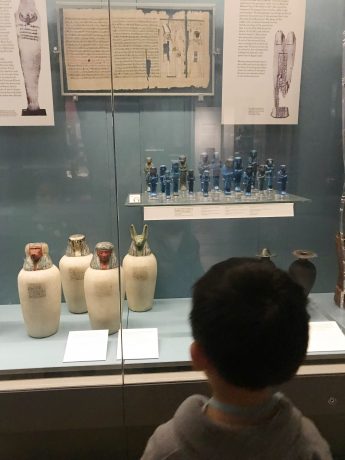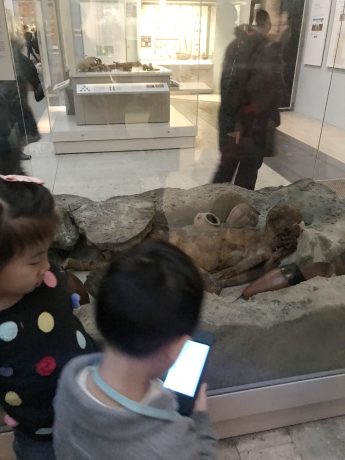There are seldom many places in the world that make me feel quite as comfortable in my own skin as London. Maybe it’s my childhood upbringing in the British Commonwealth of Canada (Cadbury delights and daily school time rituals to the Queen of England) combined with my formative years spent growing up in New York City that seems to stir a familiarity to the culture and a comfort in the hustle and bustle of a vibrant city. I really love London and was so happy to be back there with the family. As we stumbled upon many a familiar imagery throughout the city, we realized that most of the kids’ favorite programs and characters were actually British. They were also truly amazed to learn that that their current obsession – the Beatles – were actually British as well, and the kids’ voices singing their tunes were the soundtrack of our trip. Ah, the excitable mind of a child. It makes parenting really fun.
I was really looking forward to visiting a couple of museums I had not yet had a chance to visit, and The British Museum - one of the most historically significant museums in the world - was on the top of our list.
The British Museum was started through the will and collections of physician and scientist Sir Hans Sloane. His collection of over 71,000 objects was gifted to the Royal Monarchy and, in 1753, the British Museum was established. Its current location, the Bloomsbury area of London, is its location from the museum’s origins, although it has gone through massive expansions since its founding. Eventually, the museum’s increasing natural history collections were moved to a different location in the 1880s, which eventually became a separate museum called the Natural History Museum. It is the very first public national museum in the world, and its current extensive collection of over 8 million objects on human history, art and culture are among the most extensive in existence. Some notable objects include the Rosetta Stone, Assyrian Palace Reliefs and the Parthenon Sculptures. It also has the world’s largest online database of over 2 million objects including specialized research catalogs and online journals – all free and open to the public. The museum has been awarded the Carbon Trust Standard in 2009 for its efforts to reduce its carbon footprint.
We picked up a kids’ specific audio guide upon entry to make our trip more exciting. The guide lead us through a scavenger hunt game through each section of the museum. We started at the Egyptian galleries per my daughter’s prompting. We had a great time tallying up scores as we found the game’s treasures from the Rosetta stone and sarcophagi to mummies by taking silly photos, making silly noises or answering various trivia questions based on specific objects. Our environment was loud enough where we felt comfortable making a fool of ourselves without being noticed! I was particularly fascinated by the well-preserved mummy exhibits where mummified decaying flesh was on full display. The kids were definitely spooked by this section wanted nothing more than to pass through it as quickly as possible.
We were thrilled to see that the museum had a Korean Gallery. It was important for me to take the kids through this one; it’s a rare occasion that we get to see Korean specific exhibits as the usual assemblage focuses on general East Asian artifacts featuring mostly Chinese and Japanese objects. As a Korean American, I swelled with pride showing the kids the beautiful pottery with traditional Korean imagery and writings, the historic coins and a recreation of an old fashioned Korean domicile. We walked through some of the other galleries and lost track of time; unfortunately, we were too late to visit the Samsung Digital Discovery Centre, which is supposed to be one of the main attractions for kids, teens and families to enjoy. They hold various free workshops and activities on weekends using the latest Samsung digital equipment to explore museum objects and brings their history to life. Young visitors could tote along devices throughout the museum or use the facility to create masks or make mosaics in the styles of what the featured pieces. The Centre is appropriate for all ages, perfect for school groups as well and is free with museum entry.
We had some pie and brownies at the lobby café before entering the special exhibition, ‘Living with gods: people, places and worlds beyond,’ which is going on until April 8, 2018, and has been well reviewed by many publications like the Telegraph and the Evening Standard. The way spirituality and beliefs are practiced throughout cultures and history was deeply fascinating. It displayed the story of how this innate human desire to fill the “God” void by way of many different forms. It was very profound exhibit for me and a little too intense for the little ones!
As we left the British Museum with some small mementos from the gift shop in hands, we said our goodbyes to the grandiose building and grounds feeling full of world culture. On to the next London adventure!
